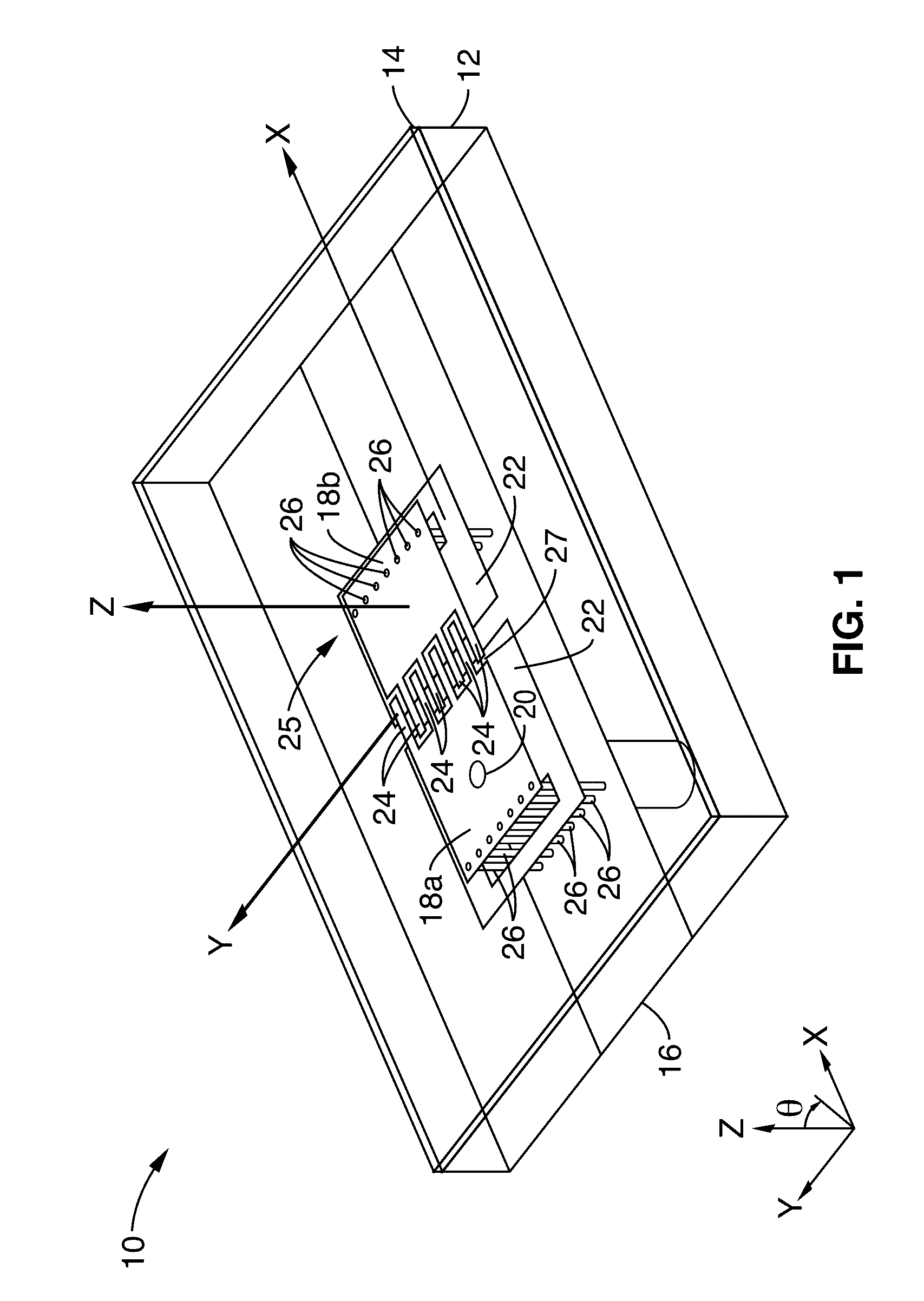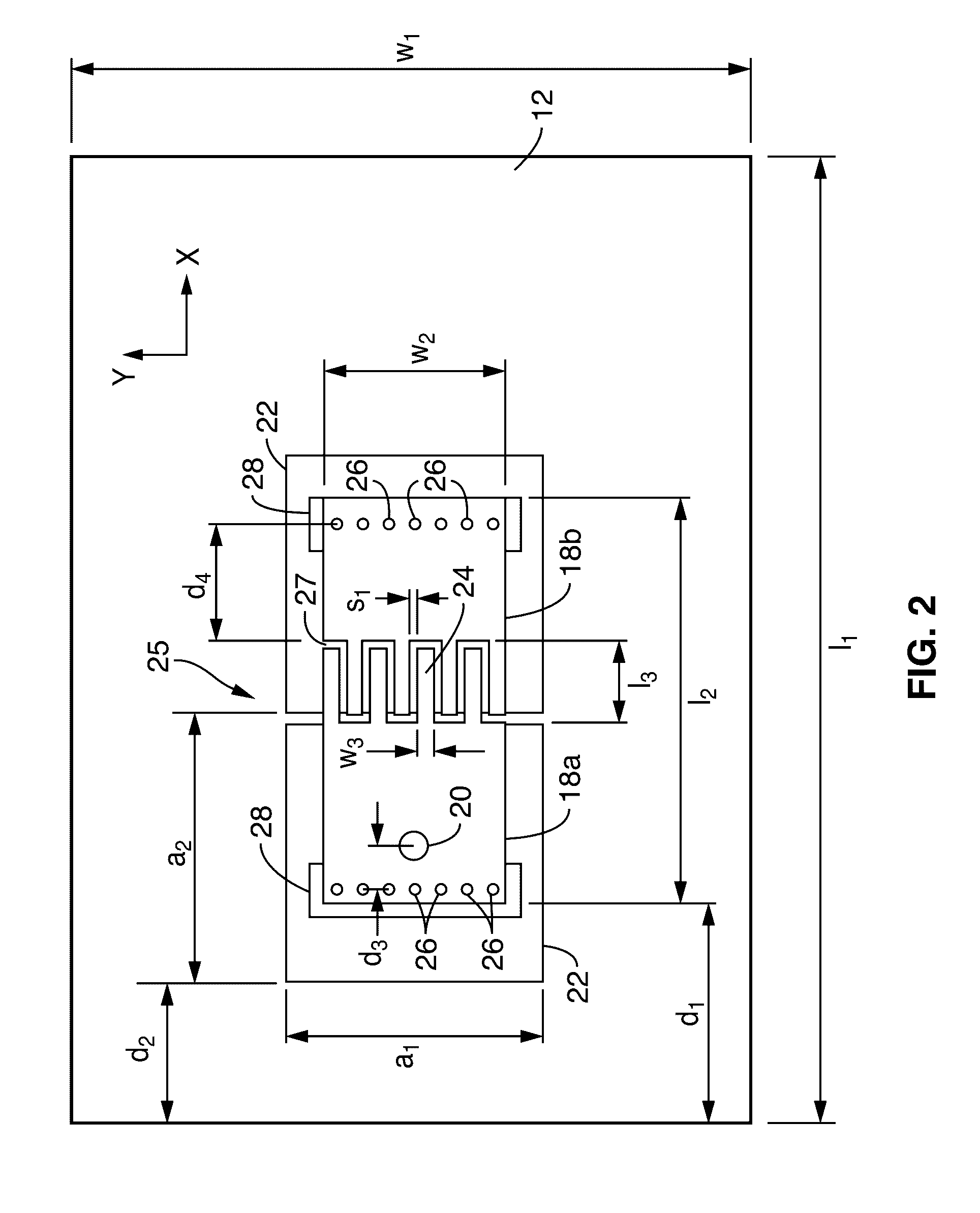Electrically small vertical split-ring resonator antennas
a split-ring resonator, electric small technology, applied in the direction of loop antennas, resonant antennas, substantially flat resonant elements, etc., can solve the problem of small footprint size, achieve small reactive impedance surface, small footprint size, and minimize radiation
- Summary
- Abstract
- Description
- Claims
- Application Information
AI Technical Summary
Benefits of technology
Problems solved by technology
Method used
Image
Examples
Embodiment Construction
[0039]FIG. 1 shows a perspective view of the geometrical layout of an inductively-fed Vertical Split-Ring Resonator (VSRR) antenna 10 of the present invention. FIG. 2 shows a plan view of the geometrical layout, with dimensions, of the inductively-fed VSRR antenna 10 of FIG. 1. FIG. 3 shows a side view of the geometrical layout, of the inductively-fed VSRR antenna 10 of FIG. 1. An input comprising a coaxial feeding probe 20 is directly connected to the top surface 14 that forms the Split-Ring Resonator (SRR), which can be represented by a series inductor. The interdigitated capacitor 25, which is the split of the VSRR, is the main radiator of the antenna 10. The interdigitated capacitor 25 is split into first planar side 18a and second planar side 18b and interface via a series of parallel interdigitated fingers 24. The two ends first planar side 18a and second planar side 18b are shorted to the ground 16 (with vias 26), making the antenna 10 act as an open loop structure, which als...
PUM
 Login to View More
Login to View More Abstract
Description
Claims
Application Information
 Login to View More
Login to View More - R&D
- Intellectual Property
- Life Sciences
- Materials
- Tech Scout
- Unparalleled Data Quality
- Higher Quality Content
- 60% Fewer Hallucinations
Browse by: Latest US Patents, China's latest patents, Technical Efficacy Thesaurus, Application Domain, Technology Topic, Popular Technical Reports.
© 2025 PatSnap. All rights reserved.Legal|Privacy policy|Modern Slavery Act Transparency Statement|Sitemap|About US| Contact US: help@patsnap.com



